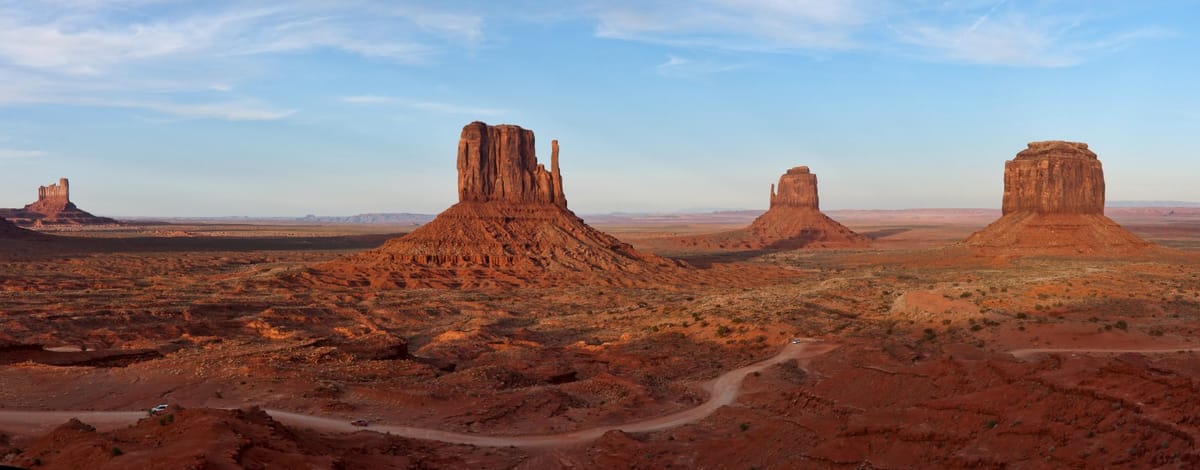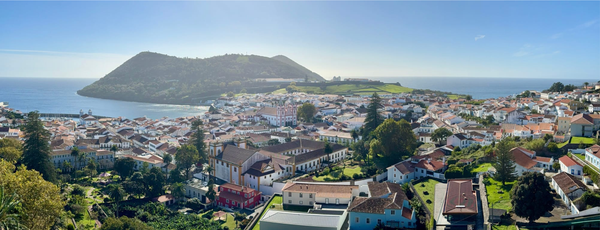Contemplate: Reclaiming Space
Written back in mid-2020, we reflect on the need for space.

By Erin Washington and Gray Shealy
This week, we look back to April in 2020, a seemingly long-lost time coined as “The Great Pause,” when the world stopped, and we contemplated the need for space and remoteness – two consequences that we predicted would be travel trends following the Covid-19 pandemic. It turns out, many of these desires still hold strong today.
—--
April 2020
The ‘Great Pause’ has given us a once-in-a-lifetime chance to catch our breath in an over-paced industry, a chance to contemplate on the past and recalibrate for the future. The Roaring Teens have been a time of travel excess, of great expenditures and innovations: A proliferation of cruise ships, aircraft, and brands that turn out, in hindsight, to be vehicles of redundance for the current reality. Simultaneously, our jobs, health, and environment have crumbled. While a divided society has many of us looking to roar once again at the same frenetic pace, many of us scorned by the recklessness of our industry are taking a wise look at what we would like our lives to become and particularly how we should travel, in years to come.
In our perspective, the future of travel for many will be defined by space as the ultimate luxury.
Space, from urban life
Large swaths of the world’s population have urbanized in the last half-century, while the prospects of employment have lured the hordes into dense clusters filled with a myriad of entertainment and lifestyle opportunities, we have evermore become disconnected from with and are yearning for our natural world. Planet-shaking trends, like plastic bag and straw-shaming are only the beginning of a newly resurrected respect for the Earth that will continue to arise over the next decade. From caring for abandoned elephant calves at Daphne Sheldrick’s orphanage in Nairobi--to immersing oneself in the native flora surrounding Mashpi Lodge deep in the rainforests of Ecuador--to picking fresh vegetables during a workshop on sustainable farming at Babylonstoren, a farm in South Africa--retreats into nature can provide a new perspective that educate us on the importance of our ecosystems and the role we play in preserving them. On a recent Adult Gap Year living in / visiting five continents around the world, I often get asked what was my favorite thing that I saw. The answer surprises most: the landscapes of the American West. The road trip we took through our many National Parks were some of the most majestic things we experienced all year. Standing in front of those awe-inspiring monoliths reminded us of the power of nature that no human could recreate. It’s time to re-learn respect for nature, for its breathtaking vistas, and for the fewer and fewer wild animals that remain to be seen. And, we don’t have to go to the extremes of the Earth to see this. We need to re-discover our own backyards, the fantastic preserves and wilds that are often a stone’s throw away, no matter where we live. Road trips and other such domestic jaunts into open space signify luxury as we re-visit how to travel within reach of the safety net of our own homes.
Space, from social media
We are all guilty of the travel selfie: visiting some place just for the sake of an Instagram photo to say you’ve been there. This narcissism driving us to push through the masses for a single post is not just becoming passé, but perhaps even gauche. During a recent visit to the famed orange gates of Kyoto’s Fushimi Inari Taisha, we were dismayed at the hordes of tourists taking their selfies along the first 30 yards of gated paths, pushing to find a spot, cropping the camera angle so it looked like they were all alone, and then abruptly turning around to head to the next tourist destination. Unbeknownst to them, there are 2.5 miles of orange-gated pathways and a glimpse of Japanese history meandering up the mountain beyond those first few gates. But before participating in the search for the perfect Instagrammable moment, perhaps we should first ask ourselves why we even went to this destination in the first place. Just because you’ve taken that photo doesn’t mean you’ve actually been there, and, unfortunately, does little to showcase a traveler’s experience of a place’s history and culture. Photos shared on social media are undoubtedly influential on others, driving the thirst for travel and a quest to explore. But, the impact of travel should go far beyond a snapped photo. The magic of travel exists when we immerse ourselves into a life different from our own, of being in the present and how it shapes us, not just how it complements our social media presence.
Space, from technology
Easily one of the best inventions in modern times, the smartphone also aids in distraction from being mentally present in a place. But, imagine a day without the interruption of connection, a day from the not-too-distant past: allowing the songs of birds and sunrise to act as natural alarm clocks; a breakfast focused on food and company rather than the streaming news from abroad; complete focus on the sights, sounds, tastes, and smells of one’s physical surroundings; pages from a book with which to fall asleep. A day without WiFi--without looking at one’s mobile device--heralds the necessity for the intentional Digital Detox. There are many advantages to being connected and informed, but sometimes we need a pause, and to be in the present, if for no other reason than our mental well-being. Let the proliferation of bad news, politics, and work take a break while we vacation. In an increasingly connected world, being disconnected has become luxurious. Our employers and lives expect us to always be ‘on,’ therefore turning ‘off’ takes initiative that must come from within. It isn't easy, and it’s all the more reason why places of silence and places of disconnect are becoming great luxuries.
Space, from work
An important mantra from my family asks us to live life while one has the ability to, as we have no way to predict the course of our lives. This mantra, “You can’t take it with you,” has influenced our decisions to climb the Virunga Mountains earlier in life to see Mountain Gorillas, or take a Gap Year. The thought of living life while we are able has become ever more poignant as we re-evaluate our mental health and priorities during this Great Pause. In the silence, many will begin to appreciate the need for pause—for space—for time—to recalibrate where our lives are going. We are burning out as companies today are working their employees to the bone, literally making people ill far earlier in life than they should be. Retirement can seem so far away and yet many of us are never stopping. Gap Years or shorter sabbaticals of even a month can often seem as far-fetched fantasies for those that need to provide for others. But, what if a sabbatical was a benefit that employers provided? “Unlimited” vacation time and vacations paid for by work are benefits provided by more progressive workplaces looking to attract exceptional talent. We need to go further to rethink how, as employers, we can help others achieve better work/life balance: Allow employees to improve their mental state and give them the quality time they need to travel to appreciate the world’s majestic natural and cultural wonders they have been flying past all these years. One former colleague of mine negotiated a six-month sabbatical with his wife and daughter last year and came back refreshed and far more energized than any of us who continued to toil away.
As the pandemic now forces us to question our own pace, employers should rethink not only how technology enables a vast remote workforce, but how giving space and longer breaks can greatly improve their employee’s quality of life and output.
Space, from discomfort
Travel, with very few exceptions, has become a mass experience: the overcrowding of the sands made infamous in The Beach, the overtourism of Venice, ubiquitous queues everywhere, cruise ships packed to occupancies well over 115%, and airliners with seat pitches compressed to sardine-can proportions. And, for the majority of us flying in economy--the battle for overhead space, arm rests, and the ‘right’ to recline--space is a luxury that’s often absent. Even in business class, some seats are seemingly less private than others. However in 2017, Delta Airlines dramatically improved this issue for their premium customers with one simple (and significant) change in the unveiling of their Delta One Suite. They took nearly the same business class configuration they were already using, and added a sliding door. By adding a partition no more than 1” thick between a passenger and the aisle or another customer, Delta has been able to provide customers the space for which they are yearning and simultaneously command premiums far above its competition. Such simple innovations and design queues that create even the perception of space are the types of solutions that are needed from thought leaders to drive improvements for travelers across all sectors of the industry.
While we have largely known that there are some serious issues in the way we have been traveling, including overcrowding, narcissism, negligence toward nature, our inability to disconnect, or take a break to recharge, we fully anticipate new and potentially world-changing ideas and businesses will be born soon after The Great Pause. Such innovations will cease to be about the excesses of an overindulgent past, but rather look outward to address these critical problems that need to change as the world re-prioritizes life and the bounty that travel affords for us. With it, comes a renewed and intensified quest for space in multiple dimensions--room to breathe--a rediscovered ‘luxury’ for the 21st Century.
—-------
See the entire article on Medium.
Syllogi aspires to help you travel better. Our occasional long-form essays think deeper about the importance of travel and what it means for our collective future.




